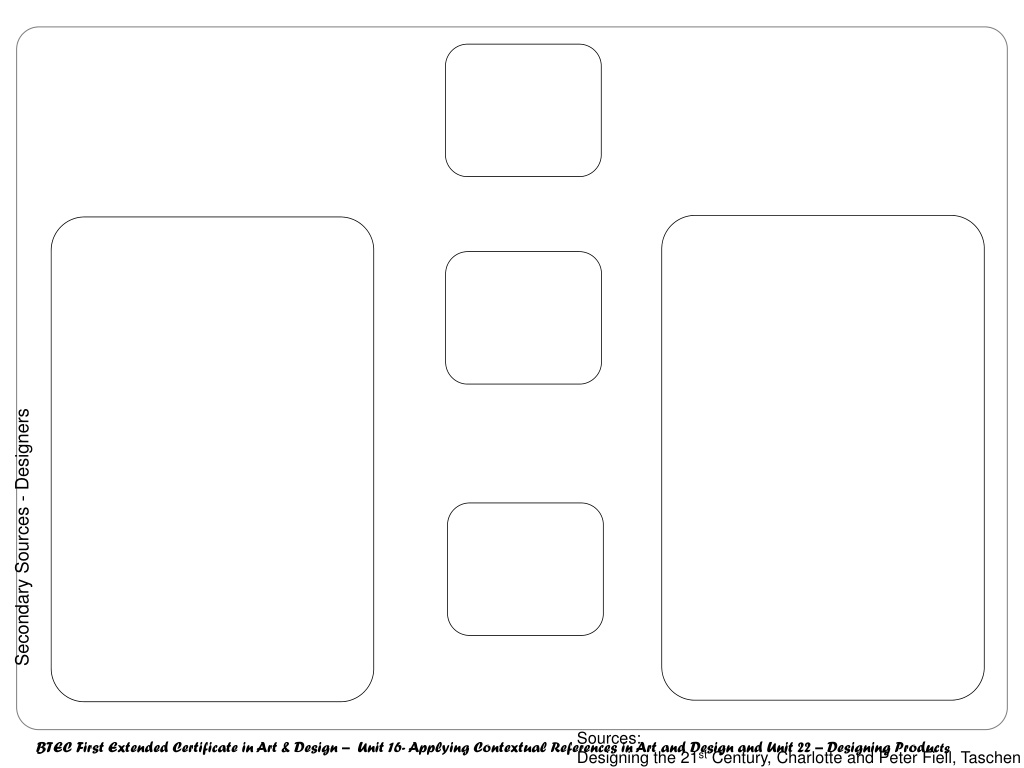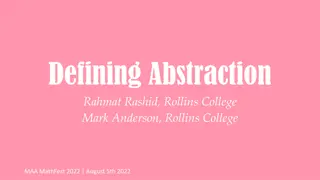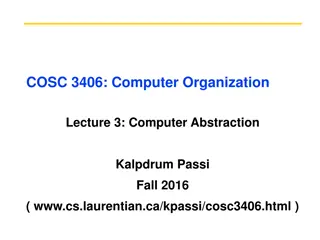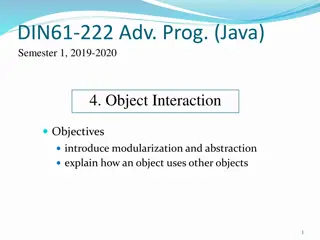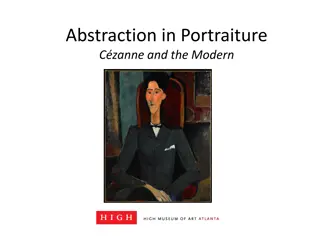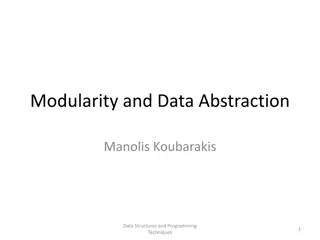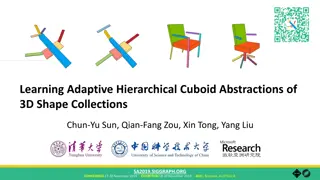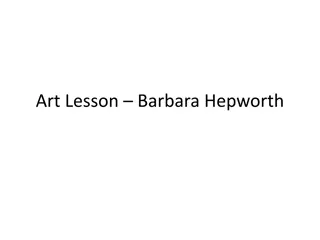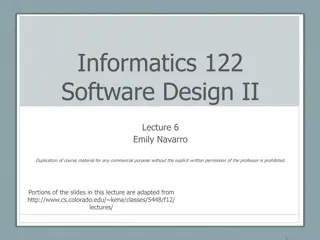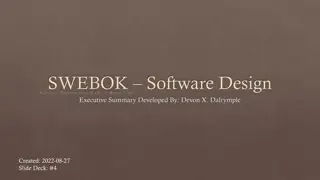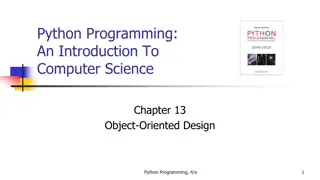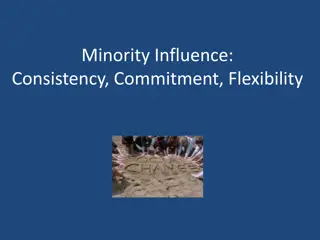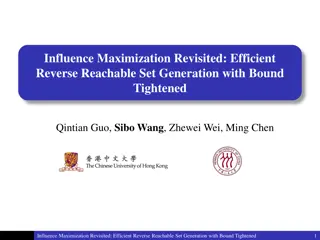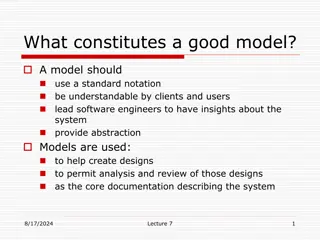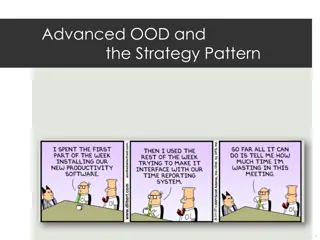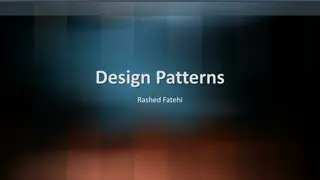Sculptural Abstraction: Barbara Hepworth's Design Influence
Barbara Hepworth, a prominent sculptor, was known for her abstract and surreal designs, characterized by geometric shapes and cut-out circles. Born in 1903, she co-founded the Unit One art movement and learned marble carving from Giovanni Ardini. Her designs often featured stacked shapes and unique compositions. This model project reflects her style through drilled out circles and balancing shapes, creating a sense of abstract movement.
Download Presentation

Please find below an Image/Link to download the presentation.
The content on the website is provided AS IS for your information and personal use only. It may not be sold, licensed, or shared on other websites without obtaining consent from the author. Download presentation by click this link. If you encounter any issues during the download, it is possible that the publisher has removed the file from their server.
E N D
Presentation Transcript
Secondary Sources - Designers Sources: Designing the 21st Century, Charlotte and Peter Fiell, Taschen BTEC First Extended Certificate in Art & Design Unit 16-Applying Contextual References in Art and Design and Unit 22 Designing Products
Put name of designer up here What do you like / don t like the persons style? Born? Information about specific notable product or art piece Interests / influences? Education? Design movement influence? Material preference? Design characteristics? Awards won? Aim / ethos? Development 1 Development 2 Make a small model of the example with a development of your own. Make a small model of the example with a development of your own. Put photo of example of work Photograph it and put in here. Photograph it and put in here. Explain what you have done to develop the design and how you have personalised it. Explain what you have done to develop the design and how you have personalised it. Has it improved the design? Has it improved the design? Referring to its design characteristics, what design movement do you think it is styled like? Referring to its design characteristics, what design movement do you think it is styled like? Put photo of example of work Sources: BTEC First Extended Certificate in Art & Design Unit 16-Applying Contextual References in Art and Design and Unit 22 Designing Products
Russell Pinch / Isamu Noguchi / Philippe Starck / Raymond Loewy / Eileen Grey / Ettore Sottsass / Stefano Giovannoni / Alessandro Mendini / Karim Rashid Thomas Heatherwick / Ross Lovegrove / Santiago Calatrava / Henry Moore / Barbara Hepworth / Anthony Caro I really like the randomness of her designs and the abstract style she sculpts with. It looks very pleasing to look at as it doesn t fall over even though it looks like it should Jocelyn Barbara Hepworth was born on 10 January 1903 in Wakefield, West Riding of Yorkshire Hepworth co-founded the Unit One art movement with Nicholson and Paul Nash, the critic Herbert Read, and the architect Wells Coates] sought to unite Surrealism and abstraction in British art. Hepworth later became involved with the Paris-based art movement, Abstraction-Cr ation. Hepworth learned how to carve marble from sculptor Giovanni Ardini Hepworth attended Wakefield Girls' High School, where she was awarded music prizes at the age of 12 and won a scholarship to study at the Leeds School of Art from 1920. It was there that she met her fellow Yorkshireman, Henry Moore. They became friends and established a friendly rivalry that lasted professionally for many years. Hepworth's design Characteristics are: - Geometric shapes - Cut-out circles in certain areas - Stacked shapes on top of each other - abstract for this design I created the different shapes by taking 3 Styrofoam blocks and drilling the circular holes through the middle and sanding them down to copy the shapes from her design. Eventually I glued it all together and used a flat board of Styrofoam to create the almost seesaw I have measured and sanded a rectangular block of Styrofoam into a perfect square. I then got a flat square shaped base and cut a little triangle into the middle so I could glue and fit the square in at the angle I wanted. Secondary Sources - Designers I think this design is very abstract and surreal and definitely fits into the same design This design looks like it would fit into the category of surrealism and abstraction or even cubism style I tried to use more of Hepworth's design characteristics in this model including the drilled out circles and balancing shapes which I think looks really satisfying to look at as it tricks your brain into thinking its going to fall over but its supported by glue and will stick strong it almost looks like a falling shape stuck in mid drop which once again gives it that abstract feel Sources: Designing the 21st Century, Charlotte and Peter Fiell, Taschen BTEC First Extended Certificate in Art & Design Unit 16-Applying Contextual References in Art and Design and Unit 22 Designing Products
Russell Pinch / Isamu Noguchi / Philippe Starck / Raymond Loewy / Eileen Grey / Ettore Sottsass / Stefano Giovannoni / Alessandro Mendini / Karim Rashid Thomas Heatherwick / Ross Lovegrove / Santiago Calatrava / Henry Moore / Barbara Hepworth / Anthony Caro I think his architectural sculptures and designs look very modern and very futuristic. I like that his designs look they ve been pulled straight from the future and that it looks very sleek and clean and really fits into the High Tech style Calatrava was born on 28 July 1951, in Benim met, an old municipality now part of Valencia, Spain. His Calatrava surname was an old aristocratic one from medieval times, and was once associated with an order of knights in Spain. particularly known for his bridges supported by single leaning pylons, and his railway stations, stadiums, and museums, whose sculptural forms often resemble living organisms. He had his primary and secondary schooling in Valencia, and, beginning in 1957, studied drawing and painting at the School of Applied Art. he went to France as an exchange student. In 1968, after completing secondary school, he went to study at the Ecole des Beaux Arts in Paris. Calatrava explained that he was particularly influenced by the work of the early 20th century Swiss engineer Robert Maillart (1872 1940), which taught him that, "with an adequate combination of force and mass, you can create emotion." Back in Valencia, discovered a book about the architecture of Le Corbusier, which persuaded him that he could be both an artist and an architect. He enrolled in the Higher School of Architecture at the Polytechnic University of Valencia Calatrava makes his architectural structures so interesting by calling on his innate knowledge of engineering to use the technical structure of his creation as the basis for his design. Think long sweeping lines, stark white materials and a flawless use of glass and light. The fact that much of his work is centred around water, like Valencia's Ciudad de las Artes y las Ciencias or his many bridges, adds a further dimension to his work. The reflections of the edifice often serve to give an enigmatic quality to each piece. I have used circular shapes and points to copy Calatrava s design but I've decided to make it less spiky and more rounded shapes and incorporate more of a sleek and smoothed design I think it looks very clean and would look really good as a sculptural piece in a garden or for a pond. It has kind of trailed off of his design a bit but It still looks high tech and I have used Calatrava s use of spikes in a circle and created a cog looking shape impaled on a stick to really steal his ideas of making a very mechanical futurist design Secondary Sources - Designers I think it really looks really sleek and really futuristic to fit his design characteristics of being a circular base shape created to have spikes sticking out If this was made to be a real sculpture I would use black and white colours and glass to really add to the futuristic aesthetic eye-catching. If I were to make this as a real design id have the left crescent as black acrylic/ plastic and the right crescent as black wood or dark oak with the middle joiner being made of glass to really stand out among anything its This design sculpture is definitely based around the style movement of High Tech based of the clean and very modern-esk design. put next to. This design definitely would be place in the high tech category but could also be placed with the style of organic due to its sleek and curvy shapes. Sources: https://www.calatrava.com/ https://en.wikipedia.org/wiki/Santiago_Calatrava BTEC First Extended Certificate in Art & Design Unit 16-Applying Contextual References in Art and Design and Unit 22 Designing Products
